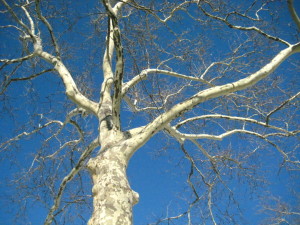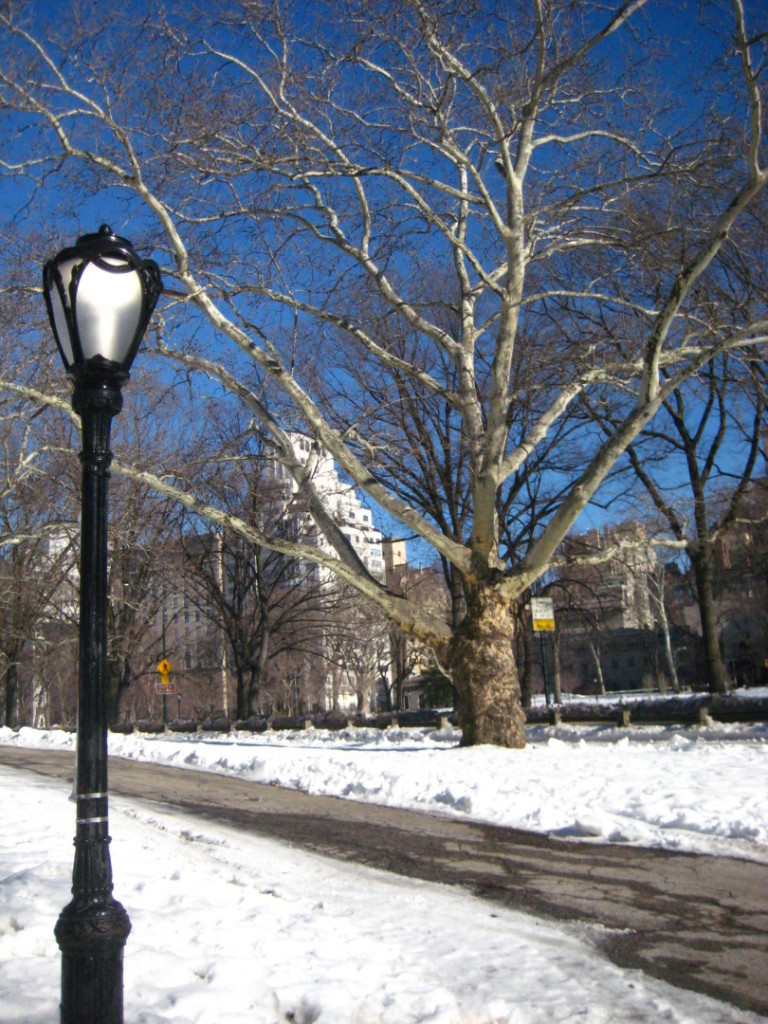The plane tree, Platanus orientalis, has a long history of shading the pathways that humans walk. Plane trees once decorated ancient Persian gardens and Chinese temples. It was among plane trees that Plato, Aristotle, and their students strolled at the Academy of Athens, debating civics, mathematics, and the good life.
Meanwhile, on the other side of the globe, the plane tree has long had a western counterpart: Platanus occidentalis, aka the American sycamore. Like its eastern relative, the sycamore can grow to immense size, and was a famous giant of the frontier. Sycamores shaded the footsteps of Daniel Boone, Davy Crockett, and Pocahontas. A young surveyor named George Washington reported measuring a sycamore 44 feet in circumference. There are credible records of old sycamores being used as houses, with whole families dwelling inside the vast hollow trunk.
The two tree species encountered each other in the 1600s, when the American cousin was transported to England by early botanists collecting new species for the gardens of London. Sometime in the seventeenth century the two species hybridized. Blended on purpose by an enterprising botanist? Interbred by accident or nature’s whim? No one knows.
But the hybrid that emerged was a glorious creation: the London plane tree.
And it turned out this new type of tree was incredibly resilient. It could even withstand the manure-splashed, foggy, grimy London streets. It’s the ideal urban tree. It’s more resistant to disease than the sycamore. It’s more cold-hardy than the oriental plane. They can even put up with something that is the kiss of death for most trees: soil compaction. Garbage trucks, cars, and millions, literally millions, of pedestrians pounding the pavement.
And the trees’ weirdly mottled bark is a thing of beauty.  Nowadays London plane trees decorate streets all over the world, from London to Paris to Barcelona to Hamburg to Manhattan. Imagine Central Park without them.
Nowadays London plane trees decorate streets all over the world, from London to Paris to Barcelona to Hamburg to Manhattan. Imagine Central Park without them.





Recent Comments